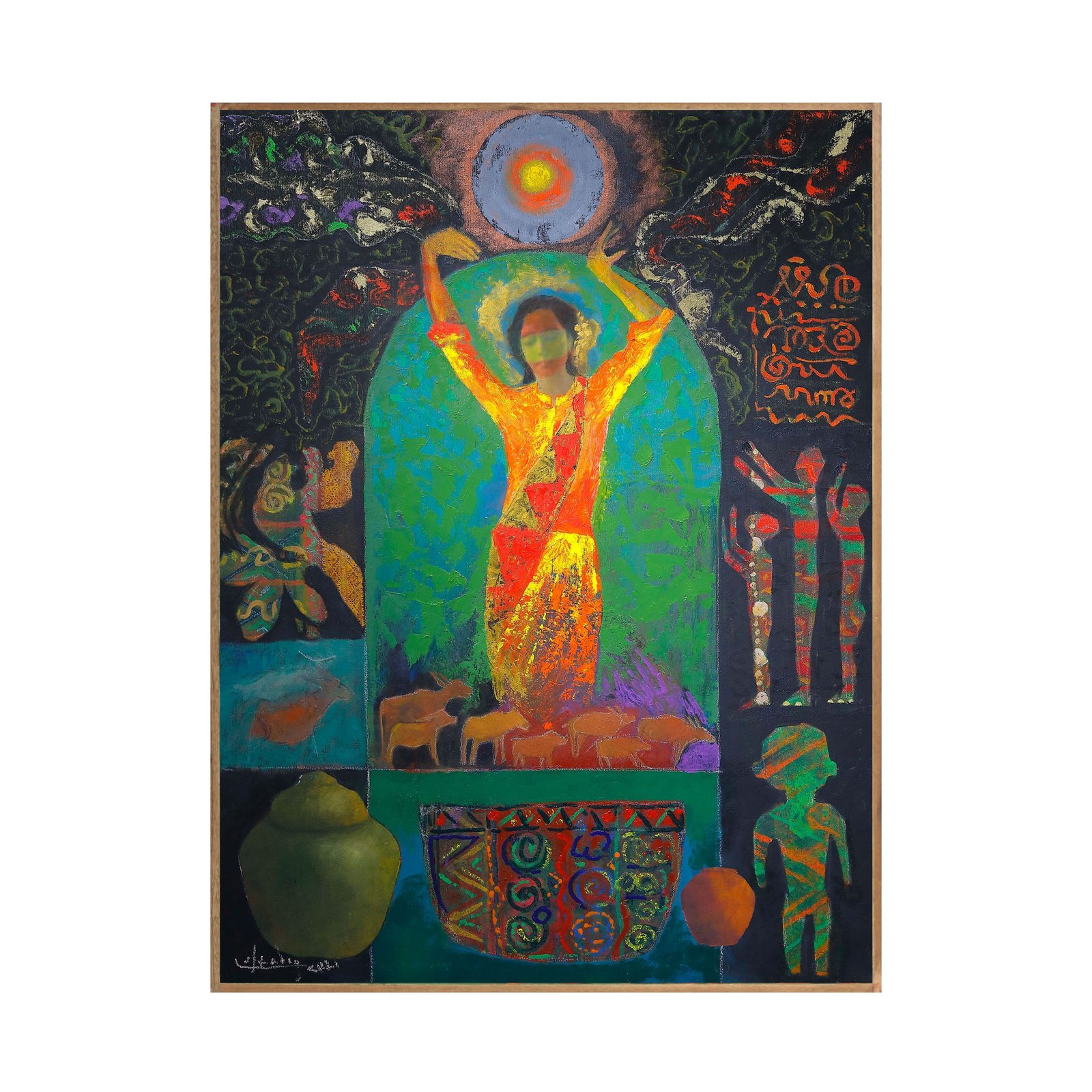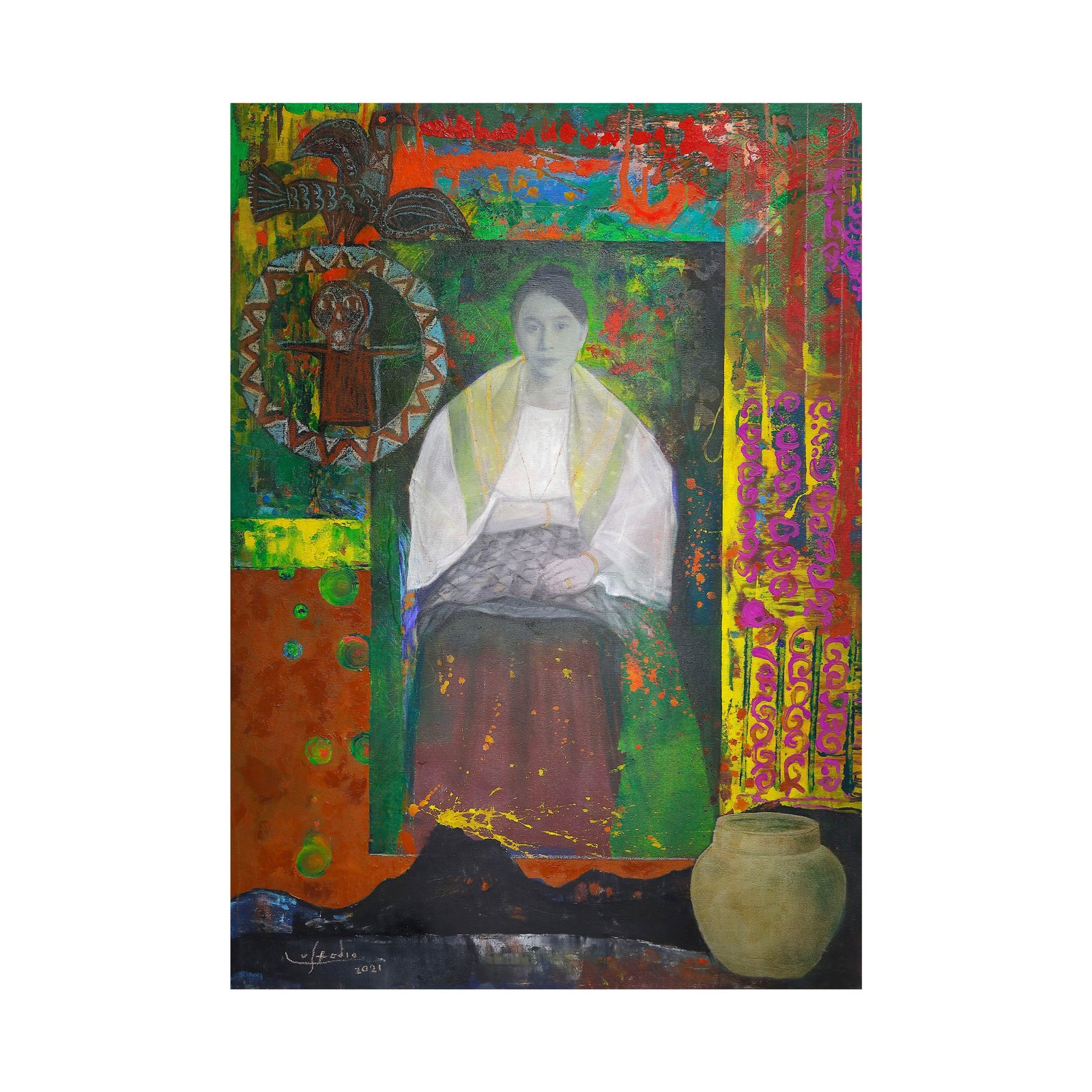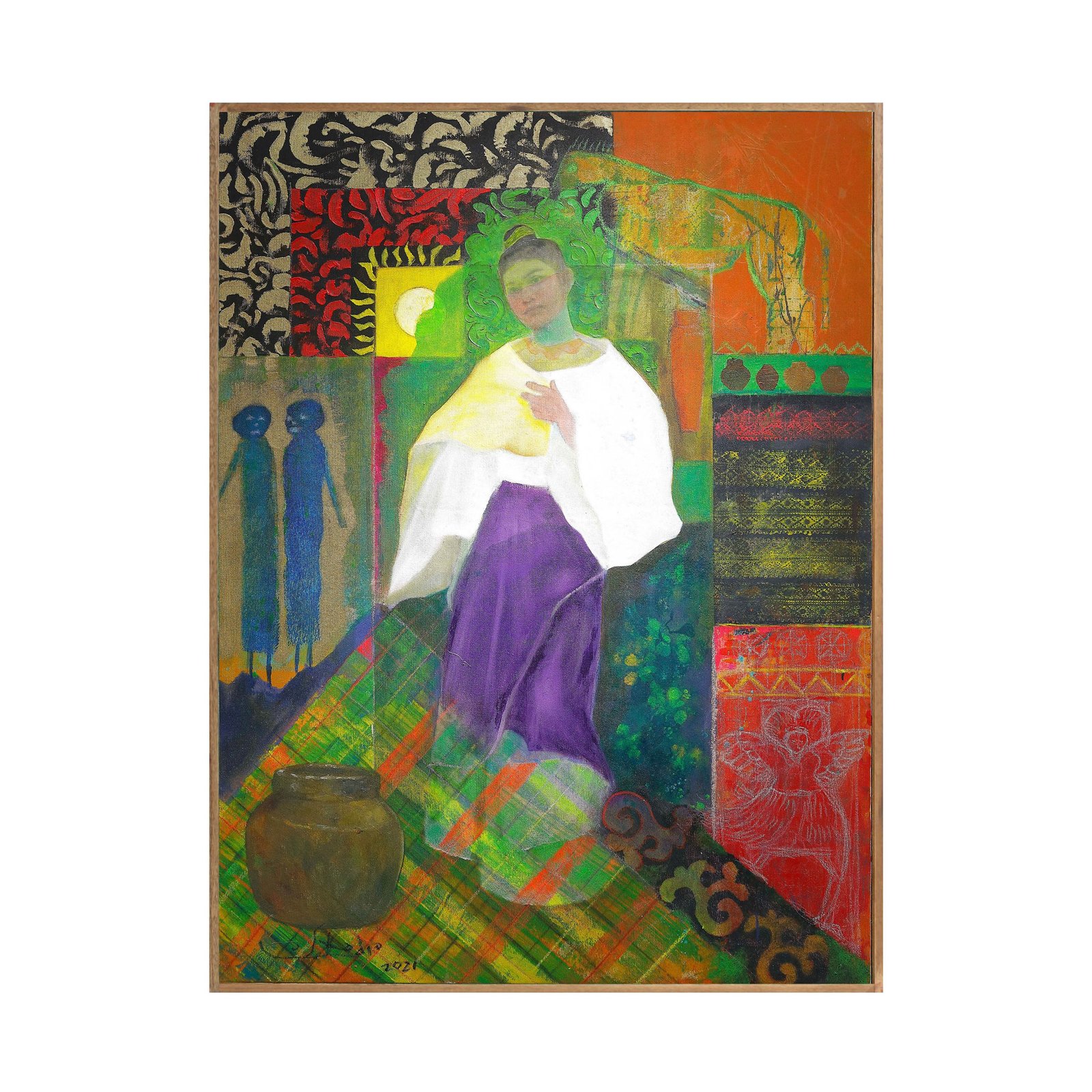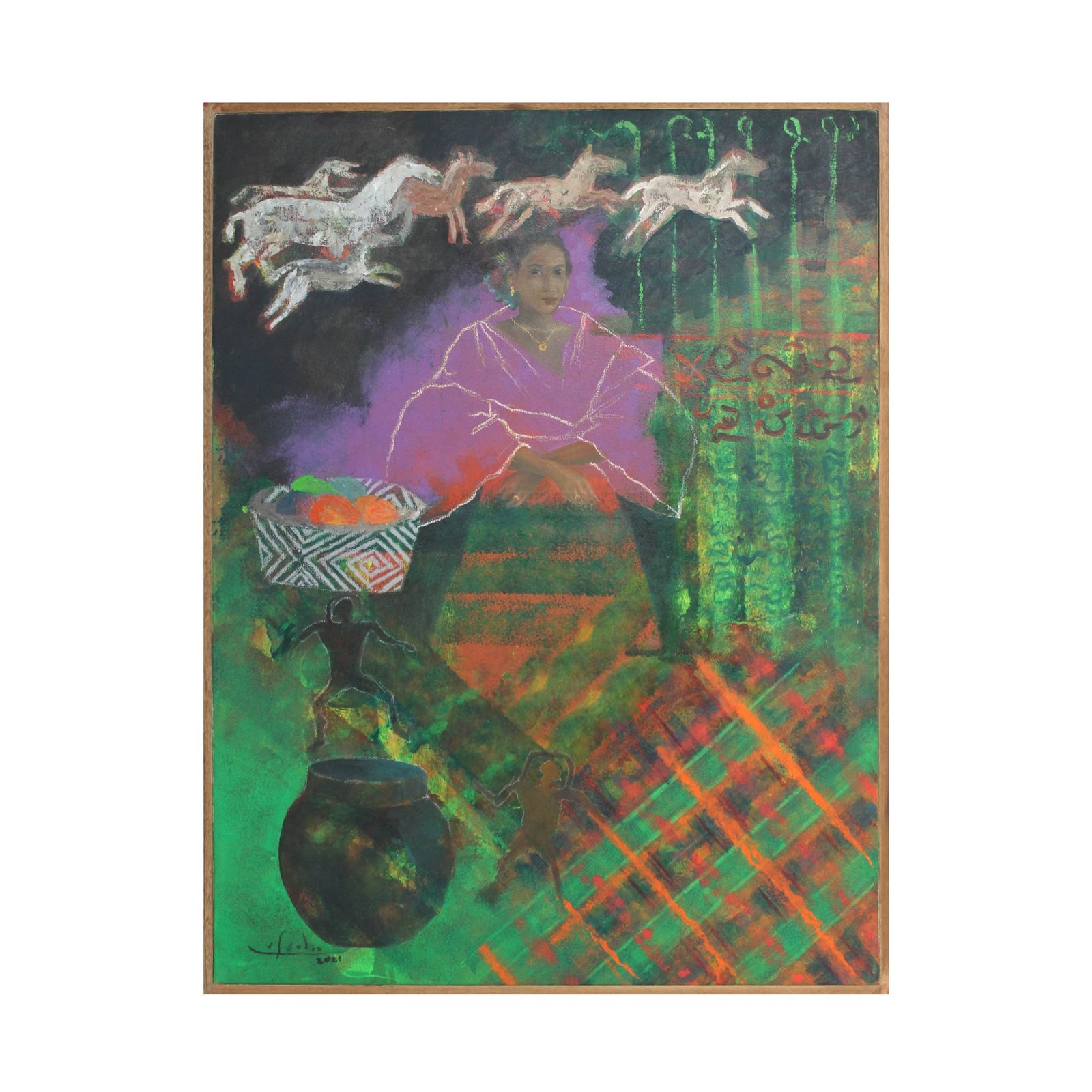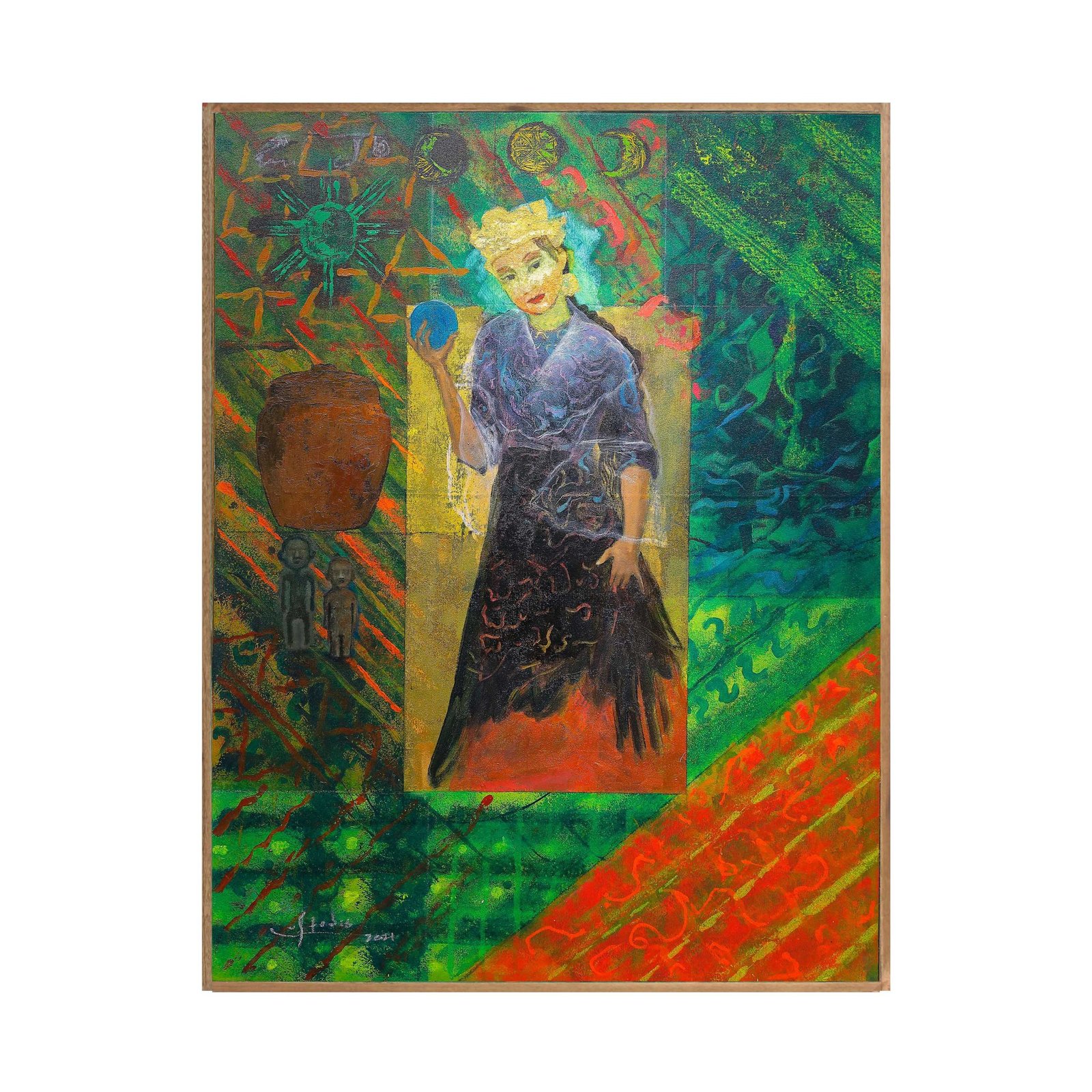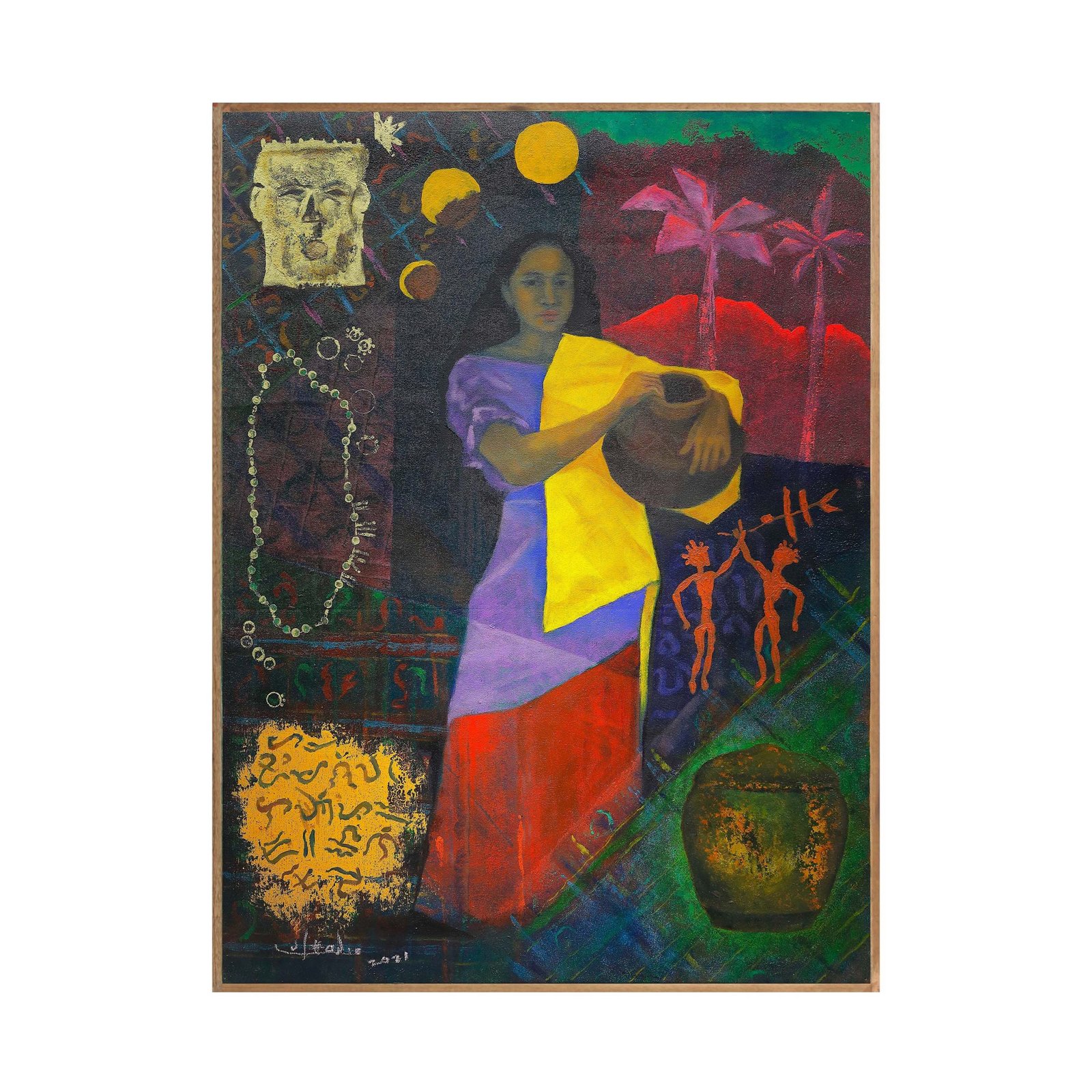Devi
Start
24 April 2021End
23 May 2021Artist
Guy Custodio
Devi – the title of this exhibit – means “heavenly, divine, anything of excellence. “It is the feminine equivalent of a deity or god in Sanskrit, deva being the masculine form. The term diwata is a derivative of deva.
In this collection of paintings, the artist Guy Custodio portrays his inspired goddesses either in the Spanish colonial finery of the 1800s or in the precolonial costumes of our ancestors, complete with gold jewelry that used to be part of their everyday attire. Custodio, whose roots are in Spain, is influenced by Spanish religious art. And so, just as the enshrined image of the Macarena in Sevilla, Spain is overdressed with embroidery and lace, Custodio’s deities are as elaborately fitted out.
For the quincentennial celebration of Christianity in the Philippines, he produced twelve original artworks about Philippine mythological deities, in recognition that before the arrival of Christianity in our islands we believed in Diwata and Bathala, much in the same way that we believe in Christianitytoday. He chosemyths, legends and folklore because, like in the creation process,these stories generate extensive symbolism from unknown origin and without boundaries. Custodio does not pretend to impress a new creation through his paints and brushes, but simply wishes to convey an essential expression of delight.
The ever-present jar (balanga, belanga, or banga) in all his paintings alludes to its important role in our ancestors’ life and death – fermenting rice, storing food and water, cooking, and burying the dead. And in the latter context, its significance even extends to the afterlife.
Custodio also created his own petroglyphs and his own Kawi-and Baybayin-like scripts, suspended behind abstract frameworks.
The pusô (boiled rice in woven pouch of palm leaves) in the Salembangen painting is in homage to the practice bypre-Hispanic Filipinos of making offerings of pusô to the Diwata spirits, and of its use in rituals, festivities, and religious events.
The artist created original patterns of batik and banigas uniquely-designed background for his paintings.
Most of the titles, characters, and stories of the paintings were invented, reimagined, and retold folktales.
Note that in the first three paintings Custodio described all the elements surrounding each deity, but he left the rest of the paintings open to the viewer’s imagination.
The artworks were painted in oil, charcoal, pastel, chalk, metal leaf and acrylic on canvas.
Guy Custodio is a visual artist and a painting conservator. He studied fine arts in Los Angeles, California and lived in Spain for more than two decades, where he also studied restoration of religious art and painting conservation under distinguished professors from Escuela de Artes y Antiguedades and the Istituto Centrale del Restauro. He lived in Bohol where he restored many church retablos and ceiling paintings. He held several exhibits in Manila; and recently has been commissioned by the National Museum of the Philippines to restore the ceiling paintings and retablos of colonial churches in Bohol and Samar.
– Ruby Candelaria Escosa



